

Business Model of Barclays ~ Business Plan, Revenue Model, SWOT Analysis
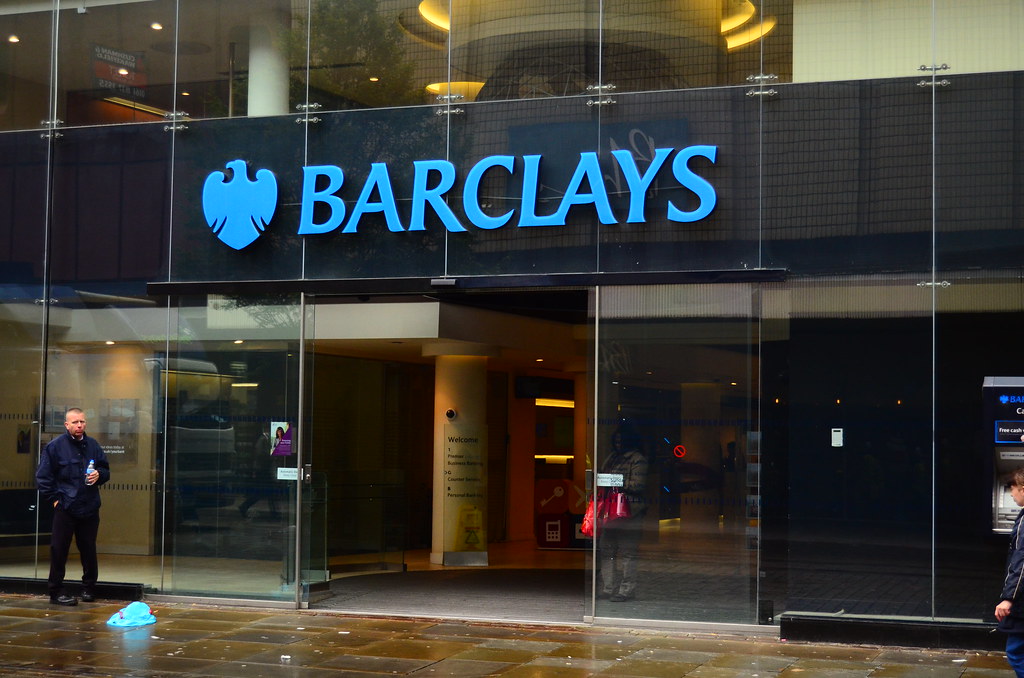
Introduction
Barclays is a British multinational universal bank, headquartered in London, England. Barclays operates as two divisions, Barclays UK and Barclays International, supported by a service company, Barclays Execution Services. The business model of Barclays involves its business plan, Revenue model, its competitors, SWOT Analysis and many more.
Business Model
Barclays International consists of Barclays Corporate and Investment Bank (formerly known as Barclays Capital) and the Consumer, Cards & Payments business. The investment banking business provides advisory, financing and risk management services to large companies, institutions and government clients. It is a primary dealer in Gilts, U.S. Treasury securities and various European Government bonds.
Revenue Model
Some of Sources of Revenue for Barclays:
Barclays UK : It consists of Deposits and Consumer Lending sub-segments and offers credit, banking and investment products and services to consumers and small businesses primarily in UK.
Consumer, Cards and Payments : Barclay card is a multi-brand credit card and consumer lending business which also processes card payments for retailers and merchants and issues credit and charge cards to corporate customers and the U.K. Government.
Advisory & Underwriting Services : It offers Financial Advisory and Debt & Equity Underwriting services.
Sales & Trading : It offers sales and trading services to institutional clients across fixed-income, credit, currency, commodity and equity businesses.
Transaction Banking : The asset management division known as Barclays Wealth focuses on private and intermediary clients worldwide providing international and private banking, fiduciary services, investment management, and brokerage.
Barclays Non-Core & Other : This represents Barclays’ head office and central support functions, businesses in transition and various consolidation adjustments as well as business units the banking group is looking to exit over coming years.
Competitors
There are several brands in the market which are competing for the same set of customers. Below are the top 10 competitors of Barclays Bank:
2. Credit Suisse
3. RBS (Royal Bank of Scotland)
4. Goldman Sachs Group
5. JP Morgan and Chase
6. BNP Paribas
8. Wells Fargo
10. Morgan Stanley
SWOT Analysis
- Innovation : Over the years, Barclays has been at the heart of innovation. The first credit card came into being in 1966 and the OnePulse card was just recently introduced, incorporating many features into the card.
- Action automation added quality continuity to Barclays services and has allowed the company to scale up and scale down on the basis of market growth trends.
- Good returns on capital expenditure : Barclays is reasonably efficient in introducing new schemes and by developing new sources of revenue, has created good returns on capital expenditure.
- Professionally experienced workers by effective systems of learning and training. Barclays spends enormous resources in the recruitment and growth of its employees, contributing to a workforce that is not only highly trained, but also driven to do more.
- Phenomenal Emerging Markets Performance : Barclays has gained experience in accessing and finding growth in new markets. The extension helps the company develop additional income sources and diversify the impact of the economic cycle in the countries in which it works.
- Outbid by ABN Amro : In 2006, ABM Amro outbid Barclay’s bid to penetrate the Asian market, and substantial costs had to be incurred to chalk out a new entry plan.
- Ethical Issues : In the last few years, Barclays has been hit by a variety of scandals. The bank was for instance, suspected in 2009 of breaking international money laundering rules. It was also accused of having helped finance the government of President Robert Mugabe in Zimbabwe. Barclays was also accused by HM Revenue and Customs in the UK of developing and employing two strategies to prevent large sums of tax. As a result, in 2012, the UK Treasury directed the bank to pay £500 million in tax. Investors can have doubt on Barclays’ honesty and ethics.
- Affecting Long Term Growth : Days stock inventory is in high contrast with the opponent adversaries – making the organization raise more cash flow to put resources into the channel. This can affect the long term development of Barclays.
Opportunities
- Emerging markets : In emerging countries where there is a growing need for credit in both retail banking and wholesale banking fields, there are great opportunities for Barclays. The push for production and growth would lead to a higher demand for credit. On this, Barclays will capitalise.
- Emerging Youth: there is a buzz in the youth nowadays for investment and they are searching for different investment alternatives. Barclays can acquire metropolitan youth searching for investment alternatives.
- The business should get into a larger portfolio of offerings in order to draw more consumers and should also aim to improve cross.
- Closing Branches : Barclays closed a number of branches in 2000 and then gained a reputation for not being a client: friendly company. Other banks have taken advantage of this and have positioned themselves as customer: friendly firms that retain open branches.
- Position in Asia : The position of Barclays in Asia is not as strong as it is in Europe. It is important to look closely and very carefully at their companies in Asia. Asia’s existing players have improved their positions and giving a touch competition to Braclays.
- Economic stability is still a threat, as is the case with any other bank. In a matter of months, when things go wrong in the macro economic scenario, the status of banks can change dramatically.
- Gold value manipulation and control: In May 2014 the Financial Conduct Authority fined the bank £26 million over frameworks and controls disappointments, and irreconcilable situations with the bank and its clients in association with the gold fixing during the period 2004–2013, and for control of the gold cost on 28 June 2012.
- Allegations of money laundering: In March 2009, Barclays paid US$298 million to settle the allegations of violating and disregarding worldwide illegal tax avoidance laws.
These factors can be overcome by implementing proper strategies like improving its online reputation and making a better brand reputation.
Barclays with more than 325 years of history and aptitude in banking, works in more than 40 nations and utilizes roughly 83,500 individuals. It is the largest bank in the United Kingdom by total assets and also the 2nd largest bank by market capitalization. It is one of the most valued banks in the United Kingdom with a brand value of about $10 billion.
Related Posts
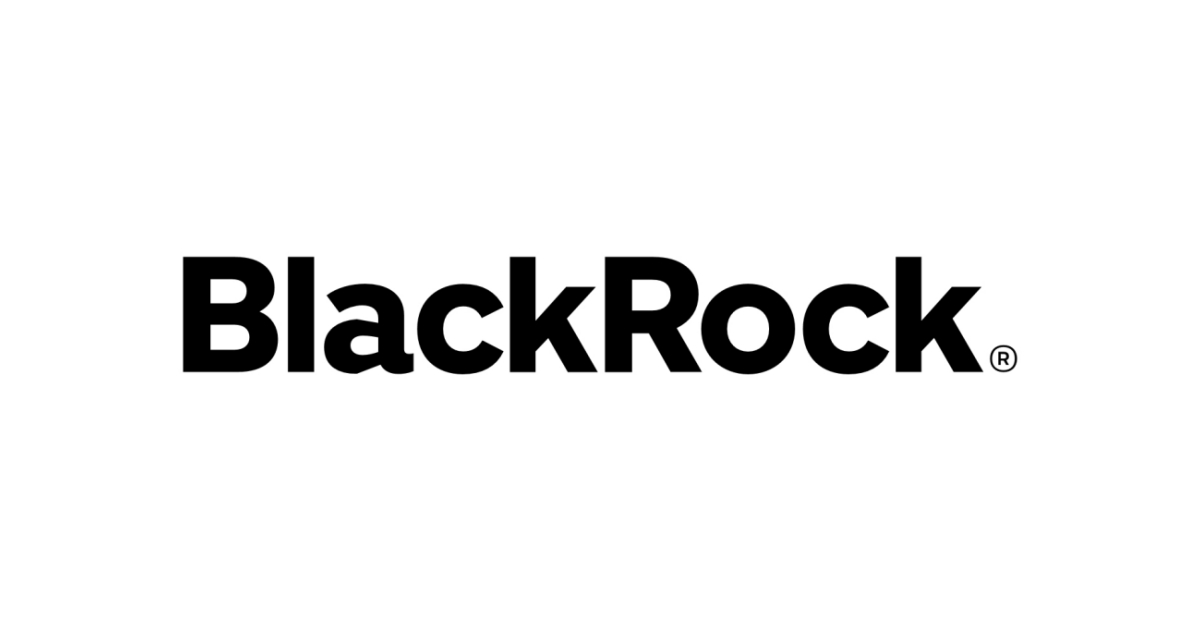
- Business Models
Business Model of Blackrock ~ Business Plan, Revenue Model, SWOT Analysis
- Aditya Jain
- September 27, 2022
Introduction BlackRock is one of the world’s leading providers of investment, advisory and risk management solutions. We are a fiduciaries to our clients. We’re investing […]

Business Model of Zara ~ Business Plan, Revenue Model, SWOT Analysis
- June 4, 2022
Introduction Zara is a Spanish company that retails in clothing and accessories. Zara specializes in fast fashion, and products constituting clothing, accessories, shoes, swimwear, beauty, […]

Business Model of Sony ~ Business Plan, Revenue Model, SWOT Analysis
- August 20, 2022
Introduction SONY is a Japanese multinational conglomerate corporation headquartered in Kōnan, Minato, Tokyo, Japan. Sony is an electronic development Japanese company worldwide. Business Model of […]
Exclusive: Barclays working on $1.25 bln cost plan, could cut up to 2,000 jobs -source
- Medium Text

- Barclays working on $1.25 billion cost savings plan
- Bank considering job cuts at Barclays Execution Services
- Unit aimed at improving efficiency has become bloated
- Barclays' share price has fallen 26% under CEO's tenure
Sign up here.
Reporting by Sinead Cruise and Lawrence White; Editing by Alexander Smith and David Evans
Our Standards: The Thomson Reuters Trust Principles. New Tab , opens new tab
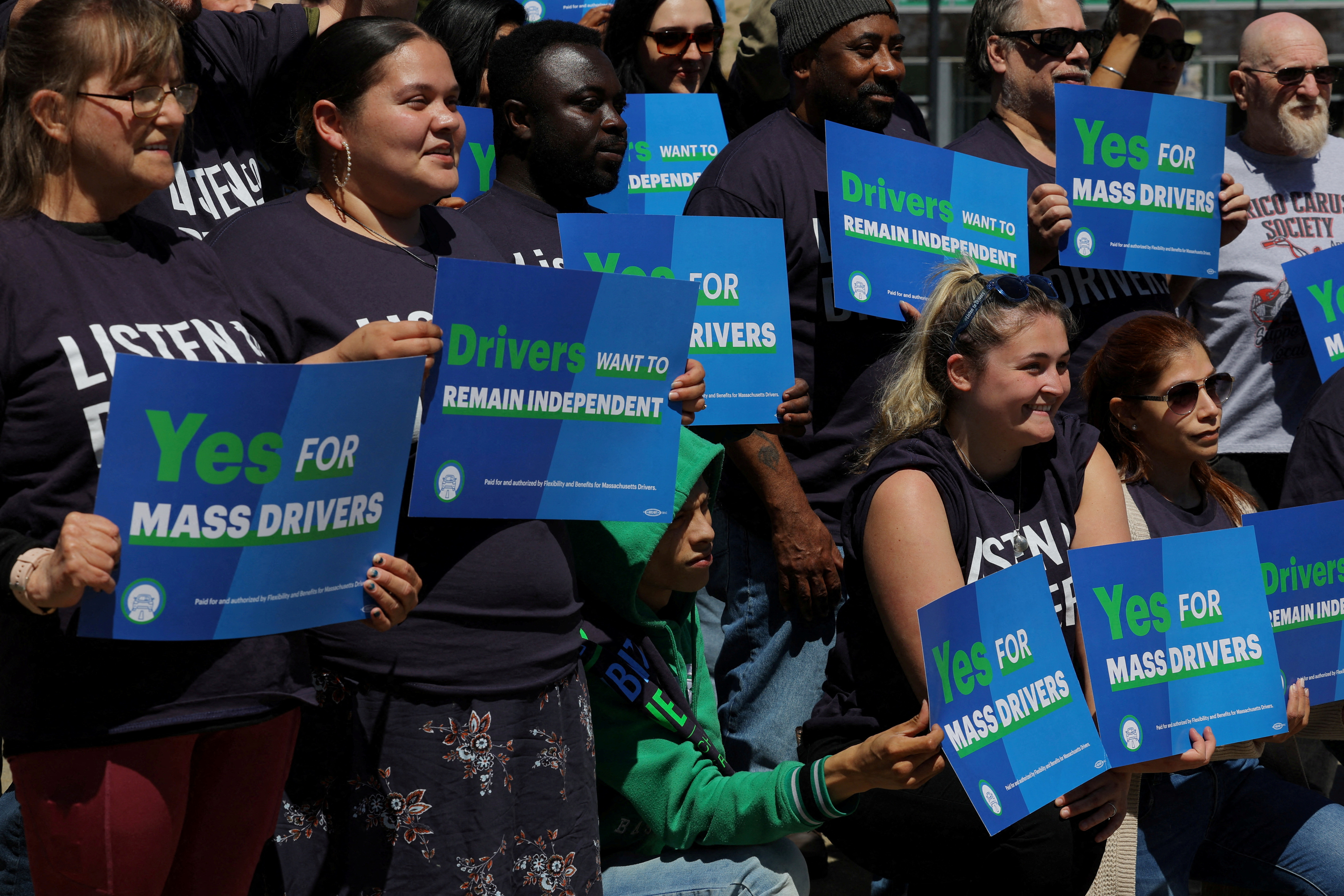
Business Chevron

Asia shares rise on rate cut bets; RBA seen turning hawkish
Asian shares made 15-month highs on Tuesday on renewed confidence of U.S. interest rate cuts, while traders waited on a policy meeting in Australia later in the day and had a close eye on a falling yen.

- Small Business
- Credit Cards
- Personal Finance
- Business Loans
- Business Bank Accounts
- Free Business Bank Accounts
- Business Insurance
- Business Energy
- Business Water
- Accounting software
- How Do Business Loans Work?
- How To Get A Business Loan
- Do I Need A Business Bank Account?
- How To Open A Business Bank Account
- Do I Need Business Insurance?
- Types Of Business Insurance
- How To Switch Business Energy Supplier
- How To Start A Business
- What is an SME?
- How To Go Self-Employed
- How To Grow Your Business
Whether you’re an established business or start-up, see the latest offers from leading business bank account providers
- Personal Loans
- Secured Loans
- Bad Credit Loans
- Guarantor Loans
- Car Finance
- Unsecured Vs Secured Loans
- How to Get a Loan
- Why Can’t I Get A Loan?
- What Are Joint Loans?
- What Is A Bank Loan?
- Am I Eligible For A Personal Loan?
- What You Need To Know About APR
- Paying Off A Loan Early
- Loans For People On Benefits
Compare loans and check your eligibility from a range of leading loan providers
- Best Mortgage Lenders
- Mortgage Rates
- Commercial Mortgages
- Mortgage Calculator
- Stamp Duty Calculator
- Mortgage Eligibility
- What Is Stamp Duty?
- Fixed Vs Variable Rate Mortgages
- What Is A Buy-To-Let Mortgage?
- What Is A Joint Mortgage?
- How Remortgaging Works
- How To Pay Off Your Mortgage Early
- How Long Does A Mortgage Offer Last?
- What Is A Shared Ownership Mortgage?
- What Is A Guarantor Mortgage?
- UK House Prices
- How To Open A Bank Account
- Student Bank Accounts
- How Overdrafts Work
- Can I Open A Bank Account For My Child?
- Regular Savings Accounts
- What Is A Personal Pension?
- ISA Or Savings Account?
- How To Choose A Credit Card
- Do I Need A Credit Card?
- Credit Card Charges And Fees
- Debit Vs Credit Cards
- Breakdown Cover
- Car Insurance
- Home Insurance
- Travel Insurance
- Life Insurance
- Do I Need Breakdown Cover?
- Do I Need Life Insurance?
- Types Of Life Insurance
- What Is Home Emergency Cover?
- How To Maintain Your Vehicle
- Benefits Of Life Insurance
- Can You Have Multiple Life Insurance Policies?
- What Does Car Warranty Cover?
- Business Bank Accounts in the UK
- Barclays Business Account Review
Barclays Business Account Review: Pros, Cons & Features
Many or all of the products and brands we promote and feature including our ‘Partner Spotlights’ are from our partners who compensate us. However, this does not influence our editorial opinion found in articles, reviews and our ‘Best’ tables. Our opinion is our own. Read more on our methodology here .
Barclays Bank is a UK-authorised high street bank that offers accounts for start ups and established businesses. Barclays also offers accounts specifically designed for charities and community groups.
Barclays Business Account
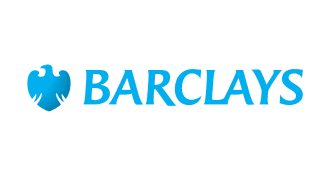
- Monthly Fee Free for 12 months No monthly fees for the first 12 months, for new customers, then £8.50 per month. T&C’s apply.
- UK Card Purchase Fees Free
- UK Bank Transfer Fees Free Charges for some bank transfers and card payments apply
- Offer Free invoicing and accounting software provided by FreshBooks, with your Barclays business account, worth over £260 per year. T&Cs apply.
This product may be one of a range offered by this provider. Always check terms & conditions for suitability before applying.
- Must have an annual turnover between £400k- £6.5m
- Must have a straightforward and clearly defined ownership structure
- Must be at least 18 years old and be based and operate in the UK – including business owners
Learn more about how we bring you our review.
Key features
- FSCS Protection Eligible deposits up to £85,000 are protected by the Financial Services Compensation Scheme (FSCS).
- Credit facilities Barclays business customers can access a range of credit facilities, including loans, mortgages and overdrafts.
- Multiple ways to manage Business customers can access and manage their accounts online, via the app, over the phone, or at a branch.
- Introductory offer New Barclays business customers are eligible for a 12-month period with no account fees. Eligible charities do not pay a maintenance fee.
Barclays business account pros & cons
- Barclays offers accounts for start ups and established businesses. It also offers accounts for charities and community groups.
- Barclays business accounts come with free invoicing and account software from FreshBooks.
- Eligible deposits of up to £85,000 are protected by FSCS – if you’re a sole trader, the £85,000 protection will be the total across all current or savings accounts you hold with Barclays, Barclays Direct and Standard Life Cash Savings.
- Customers can access support in branches across England, Wales, Scotland and Northern Ireland.
- Barclays offers credit facilities, including mortgages, overdrafts and loans, for a variety of businesses.
- Once the introductory period has ended for any of its business accounts, Barclays charges account holders a monthly account fee of £8.50, except for those holding a charity account.
- Account holders have a monthly allowance of 500 free electronic transactions. They will then be charged 35p for every electronic payment, 60p per withdrawal and deposit of cheques, and 60p for every £100 of cash they deposit.
- While Barclays says it takes an average of 10 days to set up a business account, it can take over 10 weeks in some cases.
The pros and cons featured here are chosen by us based on a combination of our expert, research-based opinions and an exclusive survey of UK business owners and decision makers. The survey was conducted on behalf of NerdWallet UK in December 2022 to identify the business bank account features that people feel are most important. They are unlikely to be the only product features and restrictions that you should consider. Pros and cons are subjective and you should align them to your own personal and business circumstances. Information was correct at the time of publication but may have changed since.
Barclays business account full review
Barclays was originally founded more than 300 years ago in London. It quickly expanded throughout England, Scotland and Wales, and now has a presence across the whole of the UK, offering both personal and business banking services.
Barclays offers three types of business current account, as well as a community account for charities and community groups.
Business accounts
Barclays has a start-up account for businesses that have been trading for less than a year and an account for those with a turnover of up to £6.5 million.
Each business account comes with a 12-month period without an account fee for new customers. At the end of this free period, the monthly fee is £8.50.
Barclays charges transaction fees both during and after the 12-month free period on all its business accounts. Once you have used its allowance of 500 free transactions, you would pay 35p per additional electronic payment. There is also a 60p transaction fee on cheque deposits and withdrawals, and 60p for every £100 of cash you deposit.
Each business account from Barclays also comes with a range of services, such as borrowing options (including business loans, mortgages and overdrafts) and online tools to support your business. In addition to information and advice guides, you’ll have access to teams of business managers, high-growth professionals and entrepreneurial experts. Barclays’ international team is also available to support your growth ambitions.
All business accounts at Barclays offer free access to invoice and accounting software from FreshBooks.
As well as this, Barclays business and community account holders can apply for a foreign currency account. This is for business account holders who trade in other currencies, making international transactions easier if you trade overseas.
Community account
Barclays’ community account for charities and impact organisations offers everyday banking and support from business managers, as well as free invoicing and accounting software from FreshBooks.
Eligible charities and community interest groups that are registered and have an annual turnover of less than £100,000 can benefit from no monthly account fee and free everyday transactions. Other community groups can still apply for the Barclays Business Account, which offers a 12-month fee-free period, after which the £8.50 monthly account fee applies, along with 500 free electronic payments before fees are incurred.
Barclays business account features: at a glance
Where barclays business account stands out.
Access to accounting software: All business and community accounts come with free access to invoice and accounting software via FreshBooks .
Account management: Customers can manage their accounts online, via the app, over the phone or in a branch.
International payments: Barclays International Payments Services (BIPs) allows business account customers to make electronic international payments to countries across the world, and offers a simple tool to generate your International Bank Account Number (IBAN).
Charities and community groups : Barclays also offers current accounts to charities and community groups, with no monthly account fee for eligible charities.
» MORE: Compare business accounting software
Where Barclays business account falls short
Set-up time : It takes an average of 10 days to set up a Barclays business account, but can take over 10 weeks.
Transaction fees: Where other business bank accounts include no transaction fees in their introductory offers, Barclays only omits the monthly account fee during the 12-month period, but retains its standard transaction fees.
» MORE: Compare business bank accounts
Barclays business account customer reviews
Barclays has a ‘bad’ rating on Trustpilot of 1.4 out of 5 based on over 10,000 reviews. However, these reviews and those on its mobile apps relate to Barclays Bank in general, and not specifically its business offering.
The Barclays mobile app has a rating of:
- 4.8 out of 5 on the app store, based on over 1.7 million ratings
- 4.5 out of 5 on Google Play, based on over 513,000 ratings
This information is correct as of 3 April 2024.
Barclays business account eligibility
To be eligible to open a business account with Barclays, you must:
- be at least 18 years old
- have the right to live in the UK permanently
- be able to show at least three years’ UK address history
- run a business with a turnover of less than £6.5 million
When you apply for a business account, you must be willing to undergo a credit check . Barclays runs a soft credit check on you and your business partners to check both your personal and business credit. If you successfully open an account, the bank will then share information about how you use the account with credit reference agencies.
How to apply for a Barclays business account
If you already have a business account with another bank and you’re looking to move to Barclays, you can use the Current Account Switch Service, which will help you to switch within seven working days. Note that you can only do so if both banks belong to the scheme.
If you don’t have an existing business account and you’re looking to apply for one of the accounts from Barclays, you’ll need to follow these steps:
- Apply online or via the app (where eligible).
- Submit proof of ID and address.
- Wait for approval once you have submitted your application. It can take 10 days on average to open an account.
Review methodology
At NerdWallet UK, we base our reviews and our ‘Best’ pages on the results of surveys we undertook about what was important to people who use these products. This allows us to look at products impartially of any commercial arrangements we have and fairly rate the products on the same set of criteria. Best means our ‘Best’ and is based only on what products we have aligned to our surveys, which form the basis of our reviews and ratings. This means that there will be other products on the market that we have not included in our ‘Best’ pages. Best does not mean it’s best for you, nor does it mean the ‘cheapest’. Our reviews may display lenders’ rates. This additional information has not been included in our evaluations but is still very important when choosing a product. Rates offered can depend on circumstances, amount and term. Always check details before proceeding with any financial product. Product details reflect the information that was available at that time but may have changed since. We strive to give you a review on as many products as possible, but there will be products not included on the market. The review is our opinion, but it does not constitute advice, recommendation or suitability for your financial circumstances. You can view our full review methodology here .
About the Authors
Milly Fox-Jones is a writer at NerdWallet focusing on finance content for SMEs. An experienced content specialist, Milly has written for start-ups and established brands alike, always striving to make…
Duncan Ferris is a business writer with expertise in pensions, investing and personal finance. Though he began his career as a pensions industry professional, he transitioned to journalism in 2017.…
Barclays reveals revival plan to woo investors as profits fall
Investors give a positive reaction to the chief executive's strategy update that aims to tackle many barriers identified by top shareholders.

Business reporter @SkyNewsBiz
Tuesday 20 February 2024 13:31, UK

Barclays has revealed a revival plan to shore up support among investors that includes cutting costs and risk while bolstering returns.
The UK-based lender's shake-up, that Sky News reported last month had already resulted in 5,000 job losses , will also see an overhaul of management, some business disposals and £10bn returned to shareholders over three years.
A total of £3bn was planned for 2023 - up 37% on the previous year.
The plan was announced as Barclays reported a 6% decline in annual pre-tax profits to £6.6bn.
Shares, down by more than 3% in the year to date ahead of the updates, rose by 6% at the open.
Chief executive CS Venkatakrishnan, known as Venkat, told investors: "Our new three-year plan... is designed to further improve Barclays' operational and financial performance, driving higher returns, and predictable, attractive shareholder distributions."
He had previously pledged to listen to a growing number of investors seeking a streamlined business model and improved returns as the bank's share price lagged those of rivals.
More from Business

For sale! Lloyds-backed estate agents Lomond goes on the market

Steel giant ArcelorMittal warns Gove over Kent planning verdict

Money latest: These are the most in-demand holiday destinations this year
Money latest: Council tax to rise by maximum in most parts of England
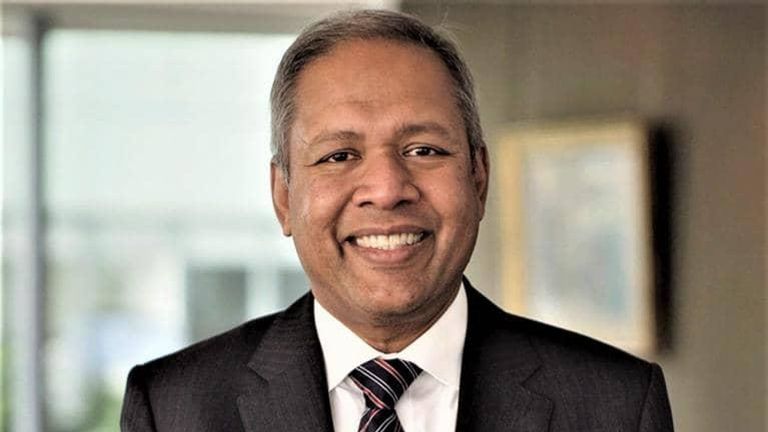
A top complaint has been Barclays' reliance on its high cost and high risk investment banking arm for profitability.
That business has attracted greater regulatory scrutiny industry wide since the financial crash of 2008, becoming even more vulnerable in times of economic uncertainty.
Its corporate and investment bank income fell by 4% to £12bn in 2023 as client activity dipped.
Please use Chrome browser for a more accessible video player
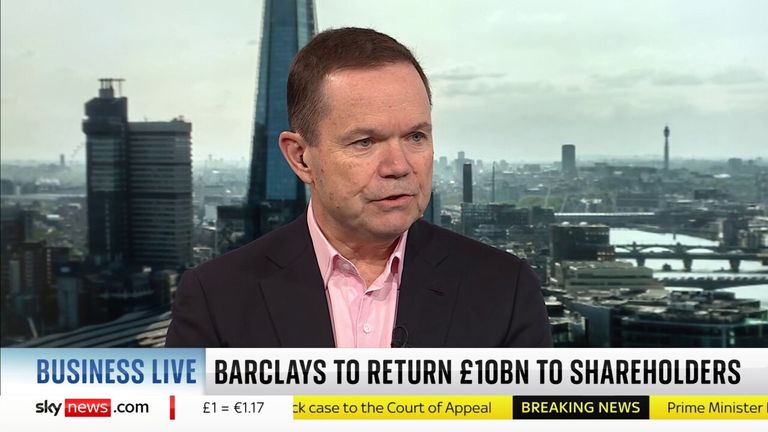
Barclays said it would simplify its business through the creation of five divisions, boosting accountability in the process, with more investment money being directed at its UK consumer arm.
The company moved to strengthen its domestic retail bank earlier this month when it agreed to buy the bulk of Tesco Bank's operations in a deal worth up to £1bn.
Be the first to get Breaking News
Install the Sky News app for free

John Moore, senior investment manager at RBC Brewin Dolphin, said of the bank's update: "Barclays has a habit of delivering mixed news - and today's results are no different.
"While the bank's results for last year are more or less in line with expectations, they are still behind 2022.
"Plans to make cost reductions and revise its corporate structure should help drive improved profitability in the next few years, underpinning shareholder returns of £10bn.
"The acquisition of Tesco Bank also looks like a good, low-risk deal in terms of overlap, cost savings, and gaining some market share.
"Barclays is in a reasonable position and appears to be cautiously optimistic about the future, but execution of the plan set out today will be key to its performance."

Presentations made painless
- Get Premium
Barclays PLC: Business Model, SWOT Analysis, and Competitors 2023
Inside This Article
In this blog article, we will delve into an overview of Barclays PLC, a global financial services company headquartered in London. We will explore its business model, which encompasses various banking and financial solutions for individuals, corporations, and institutions. Additionally, we will conduct a SWOT analysis to identify the company's strengths, weaknesses, opportunities, and threats in the ever-changing financial landscape. Lastly, we will examine the key competitors in the industry and analyze how Barclays PLC stands in comparison as we look ahead to the year 2023.
What You Will Learn:
- Who owns Barclays PLC, providing insights into the ownership structure of the company and the key stakeholders involved.
- The mission statement of Barclays PLC, understanding the core values and objectives that drive the company's operations.
- How Barclays PLC makes money, exploring the various revenue streams and business strategies employed by the company for generating profits.
- An explanation of the Barclays PLC Business Model Canvas, gaining a comprehensive understanding of the key elements and components that make up the company's business model.
- The competitors of Barclays PLC, identifying the main companies in the industry that pose a competitive threat to Barclays.
- A SWOT analysis of Barclays PLC, analyzing the strengths, weaknesses, opportunities, and threats that impact the company's overall performance and market position.
Who owns Barclays PLC?
Introduction.
Barclays PLC is a multinational banking and financial services company headquartered in London, United Kingdom. With a rich history that dates back over 300 years, Barclays has become one of the world's leading financial institutions. As a publicly traded company, it is interesting to explore who owns Barclays PLC and the key shareholders that have a significant stake in the company.
Institutional Shareholders
Institutional shareholders play a crucial role in owning Barclays PLC. These are typically large financial institutions, such as pension funds, mutual funds, and insurance companies, that invest substantial amounts of money on behalf of their clients. According to the latest available information, some of the major institutional shareholders of Barclays PLC include:
1. The Vanguard Group
The Vanguard Group is an American investment management company that holds a considerable stake in Barclays PLC. With its focus on low-cost index funds, the Vanguard Group manages assets worth trillions of dollars for its clients, including both individual and institutional investors.
2. BlackRock
BlackRock, another prominent American investment management firm, is also among the top institutional shareholders of Barclays PLC. As one of the world's largest asset managers, BlackRock has a significant influence on the global financial markets and holds a substantial stake in numerous companies across various sectors.
3. Legal & General Group
Legal & General Group, a British multinational financial services company, is another notable institutional shareholder of Barclays PLC. With a strong presence in both the United Kingdom and internationally, Legal & General manages a diverse range of investments, including pension funds and insurance assets.
Individual Shareholders
Apart from institutional investors, there are also individual shareholders who own a part of Barclays PLC. These can include retail investors, employees of the company, and high-net-worth individuals. While it may be challenging to pinpoint specific individual shareholders, it is worth noting that Barclays PLC has a significant number of retail investors who hold shares through brokerage accounts and investment platforms.
Significant Shareholders
In addition to institutional and individual shareholders, there are some notable investors who hold a significant stake in Barclays PLC. These shareholders often have a significant influence on the company's decision-making and strategic direction. As of the latest disclosures, the Qatar Investment Authority and the Government Investment Corporation of Singapore are among the significant shareholders of Barclays PLC.
Understanding the ownership structure of Barclays PLC provides valuable insights into the company's governance and the stakeholders who have a vested interest in its success. While institutional shareholders like The Vanguard Group, BlackRock, and Legal & General Group play a vital role, individual shareholders, including retail investors, also contribute to the ownership of Barclays PLC. Additionally, the presence of significant shareholders such as the Qatar Investment Authority and the Government Investment Corporation of Singapore highlights the global nature of Barclays' ownership.
What is the mission statement of Barclays PLC?
Understanding the mission statement of barclays plc.
A mission statement is a concise and powerful statement that outlines the purpose and goals of a company. It serves as a guiding principle that helps shape the company's strategies and actions. In the case of Barclays PLC, their mission statement reflects their commitment to providing excellent financial services to their customers and creating value for their stakeholders.
Barclays PLC's mission statement can be summarized as follows: "To help people achieve their ambitions - in the right way." This statement captures the essence of the company's purpose and highlights its focus on supporting individuals and businesses in achieving their financial goals while maintaining ethical standards.
By stating their mission as "helping people achieve their ambitions," Barclays PLC emphasizes their dedication to assisting customers in reaching their aspirations and realizing their full potential. This mission statement reflects their commitment to providing innovative financial solutions and services that empower individuals and businesses to succeed.
The inclusion of the phrase "in the right way" signifies Barclays PLC's strong emphasis on integrity, ethics, and responsible practices. It highlights their commitment to conducting business in a manner that is transparent, fair, and compliant with regulatory standards. By ensuring that their actions align with ethical principles, Barclays PLC aims to build trust and credibility with their customers and stakeholders.
Barclays PLC's mission statement not only reflects their commitment to their customers but also underscores their responsibility towards the broader society and environment. As a global financial institution, they understand the impact their operations can have on society and strive to make a positive difference through their products, services, and corporate citizenship initiatives.
In conclusion, Barclays PLC's mission statement encapsulates their dedication to helping individuals and businesses achieve their financial goals while upholding ethical standards. By providing innovative financial solutions and conducting business in a responsible manner, Barclays PLC aims to create value for their customers, stakeholders, and society as a whole.
How does Barclays PLC make money?
Retail banking.
Barclays PLC generates a significant portion of its revenue through its retail banking operations. This division serves individuals and small businesses, offering a wide range of banking products and services. These include personal and business accounts, mortgages, loans, credit cards, and wealth management solutions. By charging fees, interest, and commissions on these services, Barclays generates revenue from the retail banking sector.
Corporate and Investment Banking
Another major source of income for Barclays PLC comes from its corporate and investment banking division. This segment provides financial services to corporations, governments, and institutional clients across the globe. Barclays offers advisory services for mergers and acquisitions, capital raising, and restructuring transactions. It also engages in trading activities, including foreign exchange, fixed income, equities, and commodities. By earning fees, commissions, and interest from these business activities, Barclays generates substantial revenue.
Wealth Management
Barclays PLC operates a wealth management division that caters to high-net-worth individuals and families. This segment offers personalized investment solutions, financial planning, and private banking services. Through the management of clients' portfolios and charging fees based on assets under management, Barclays generates revenue from its wealth management operations.
Credit Card Business
Barclays PLC is a prominent issuer of credit cards, both in the United Kingdom and internationally. Through partnerships with various retailers and organizations, Barclays issues co-branded credit cards that offer rewards and benefits to cardholders. By charging interest on credit card balances, annual fees, and transaction fees, Barclays earns revenue from its credit card business.
Barclays Africa Group Limited
Barclays PLC's subsidiary, Barclays Africa Group Limited, contributes to the company's revenue through its operations in Africa. This division offers a range of banking services, including retail, commercial, and corporate banking. By providing loans, accepting deposits, and offering other financial products, Barclays Africa generates income for Barclays PLC.
Other Sources of Revenue
Apart from the aforementioned segments, Barclays PLC also generates revenue from various other sources. These include treasury operations, where the company manages its own investment portfolio and engages in trading activities to generate returns. Additionally, Barclays earns income from its card acquiring business, where it processes card transactions for merchants and charges fees on these services.
Overall, Barclays PLC employs a diversified business model to generate revenue from multiple sources. This strategy helps the company mitigate risks and capitalize on opportunities in different sectors of the financial industry.
Barclays PLC Business Model Canvas Explained
The Barclays PLC Business Model Canvas provides a comprehensive framework for understanding the key elements of Barclays' business model. This canvas helps to visualize how the company creates, delivers, and captures value, allowing stakeholders to gain insights into the company's strategy and operations. In this section, we will delve into each component of the Business Model Canvas and explain its relevance to Barclays PLC.
Key Partnerships
Barclays PLC relies on a network of key partnerships to enhance its business model. These partnerships are crucial in enabling the company to deliver a wide range of financial products and services to its customers. For instance, Barclays collaborates with technology companies to develop innovative digital solutions, such as mobile banking apps and online platforms. Additionally, partnerships with other financial institutions enable Barclays to expand its reach and offer customers access to global financial markets.
Key Activities
The key activities of Barclays PLC encompass a broad range of financial services. These activities include retail and commercial banking, investment banking, wealth management, and credit card services. Through its retail and commercial banking division, Barclays provides a wide array of financial products to individual and business customers, such as current accounts, loans, mortgages, and insurance. In investment banking, Barclays engages in activities such as advisory services, capital raising, and trading. By diversifying its key activities, Barclays is able to cater to the diverse needs of its customer base and generate multiple revenue streams.
Key Resources
Barclays PLC relies on various key resources to deliver its products and services effectively. One of the most critical resources for Barclays is its extensive branch network, which provides customers with physical access to banking services. Additionally, the company relies on a skilled workforce, including financial experts and technology professionals, to ensure the smooth functioning of its operations. Moreover, Barclays leverages its technological infrastructure, such as data centers and digital platforms, to enhance its service offerings and provide customers with convenient and secure banking experiences.
Value Proposition
The value proposition of Barclays PLC revolves around providing customers with financial solutions tailored to their needs. The company aims to offer products and services that help customers achieve their financial goals and improve their financial well-being. Whether it is providing personalized investment advice, offering competitive interest rates on savings accounts, or facilitating seamless international transactions, Barclays strives to deliver value that differentiates it from its competitors. By focusing on customer-centric solutions, Barclays aims to build long-term relationships and earn the trust of its customers.
Customer Segments
Barclays PLC serves a diverse range of customer segments, including individuals, small and medium-sized enterprises (SMEs), and large corporations. The company recognizes that each segment has distinct needs and preferences, and therefore tailors its products and services accordingly. For individuals, Barclays offers personal banking services, including current accounts, credit cards, and mortgages. SMEs benefit from specialized business banking solutions, such as cash management and lending facilities. Large corporations can leverage Barclays' investment banking expertise, corporate banking services, and treasury solutions to support their growth and financial management.
Barclays PLC utilizes a multi-channel approach to reach its customers effectively. Traditional channels, such as physical branches and call centers, remain crucial for providing personalized services and resolving complex queries. However, the company also recognizes the importance of digital channels in today's digital age. Barclays has invested heavily in its online and mobile banking platforms, enabling customers to access their accounts, make transactions, and seek assistance conveniently. Through this omni-channel approach, Barclays ensures that customers can engage with the company through their preferred channels, enhancing their overall banking experience.
Revenue Streams
Barclays PLC generates revenue through various streams derived from its diverse range of financial products and services. The company earns interest income from loans and mortgages, fees from investment banking activities, and commissions from wealth management services. In addition, Barclays generates revenue through credit card fees, foreign exchange transactions, and service charges. By diversifying its revenue streams, Barclays mitigates risks associated with relying heavily on a single source of income and enhances its overall financial stability.
The Barclays PLC Business Model Canvas provides a holistic view of the company's business model, highlighting the interdependencies between its various components. Through strategic partnerships, a wide range of activities, key resources, and a customer-centric approach, Barclays aims to deliver value to its diverse customer segments. Leveraging multiple channels and revenue streams, Barclays reinforces its position as a leading financial institution and seeks to adapt to the ever-changing dynamics of the financial industry.
Which companies are the competitors of Barclays PLC?
Barclays PLC, a British multinational investment bank and financial services company, operates in a highly competitive industry. In this section, we will explore some of the key competitors that Barclays faces in various areas of its business.
Competitors in Investment Banking
When it comes to investment banking services, Barclays encounters fierce competition from several global financial institutions. Some of its notable competitors include:
JPMorgan Chase & Co: As one of the largest investment banks worldwide, JPMorgan Chase offers a wide range of financial services and competes directly with Barclays in investment banking.
Goldman Sachs Group Inc: Renowned for its expertise in mergers and acquisitions, Goldman Sachs poses a significant challenge to Barclays, particularly in investment banking advisory and underwriting services.
Citigroup Inc: With its global footprint and diversified banking operations, Citigroup competes with Barclays in various aspects of investment banking, including capital markets, mergers and acquisitions, and corporate finance.
Rivals in Retail Banking
In the retail banking sector, Barclays faces competition from both traditional banks and emerging digital disruptors. Some of its prominent rivals include:
HSBC Holdings plc: As another major player in the UK banking industry, HSBC offers a wide range of retail banking products and services, directly competing with Barclays in areas such as personal loans, mortgages, and savings accounts.
Lloyds Banking Group plc: Lloyds is a leading retail and commercial bank in the UK, providing strong competition to Barclays in retail banking services, including current accounts, credit cards, and mortgages.
Monzo Bank Ltd: Monzo, a UK-based digital bank, has gained popularity among younger consumers with its user-friendly mobile banking app and innovative features. It poses a challenge to Barclays by attracting customers looking for a more modern banking experience.
Fintech Challengers
In recent years, the rise of fintech companies has disrupted the financial services landscape, forcing traditional banks like Barclays to adapt and innovate. Some fintech competitors that Barclays faces include:
Revolut Ltd: Revolut is a UK-based digital banking and payments platform that offers a range of services, including international money transfers, currency exchange, and budgeting tools. It competes with Barclays, particularly in attracting tech-savvy customers who value convenience and low fees.
TransferWise Ltd: Specializing in low-cost international money transfers, TransferWise provides a competitive alternative to traditional banks like Barclays, offering transparent exchange rates and minimal transfer fees.
PayPal Holdings, Inc: With its popular online payment platform, PayPal competes with Barclays in the digital payment space, especially in e-commerce transactions. It provides customers with a convenient and secure way to make online payments, posing a challenge to traditional banking services.
Barclays PLC operates in a highly competitive industry, facing rivals in various sectors of its business. From global investment banking giants to traditional retail banks and emerging fintech challengers, the competition is fierce. To stay ahead, Barclays must continually adapt, innovate, and provide exceptional customer experiences to retain and attract clients in this ever-evolving financial landscape.
Barclays PLC SWOT Analysis
Strong brand recognition: Barclays PLC is a well-known and trusted brand in the global banking industry. With a history that dates back over 300 years, the company has built a strong reputation for providing reliable financial services to its customers.
Diversified revenue streams: Barclays operates in multiple segments, including retail banking, corporate banking, investment banking, and wealth management. This diversification helps the company mitigate risks and generate stable revenue from various sources.
Global presence: Barclays has a widespread presence in more than 40 countries, making it a truly global bank. This allows the company to leverage its international network and tap into diverse markets, thereby expanding its customer base and revenue opportunities.
Strong technological infrastructure: Barclays has invested significantly in its technological capabilities, enabling it to offer innovative digital banking solutions to its customers. The company's robust infrastructure enhances its operational efficiency and provides a seamless user experience.
Overreliance on investment banking: While Barclays has a diversified business model, it still heavily relies on its investment banking division for a significant portion of its revenue. This exposes the company to market volatility and regulatory risks associated with the investment banking industry.
High exposure to the UK market: Despite its global presence, Barclays is highly dependent on the UK market. Any adverse economic or political developments in the UK, such as Brexit, can significantly impact the company's performance and profitability.
Past regulatory issues: Barclays has faced regulatory scrutiny and fines in the past for various misconducts, including the manipulation of benchmark interest rates. These issues have tarnished the company's reputation and led to financial penalties, impacting its profitability and brand image.

Opportunities
Growing demand for sustainable finance: The increasing focus on sustainability and environmental responsibility presents an opportunity for Barclays to expand its offerings in sustainable finance. The company can develop innovative products and services that cater to the growing demand for environmentally friendly investments and financing options.
Expansion into emerging markets: Barclays can capitalize on the growth potential of emerging markets by further expanding its presence in regions such as Asia, Africa, and Latin America. These markets offer untapped opportunities for the company to attract new customers and diversify its revenue streams.
Technological advancements: Rapid technological advancements present opportunities for Barclays to enhance its digital banking capabilities and develop new innovative solutions. By leveraging technologies like artificial intelligence, blockchain, and data analytics, the company can improve operational efficiency, customer experience, and gain a competitive edge.
Intense competition: The global banking industry is highly competitive, with numerous established players and emerging fintech startups. This intense competition poses a threat to Barclays' market share and profitability, as competitors constantly strive to attract customers through innovative products and competitive pricing.
Economic downturns: Economic downturns, such as recessions or financial crises, can have a significant impact on the banking industry. A decrease in consumer spending, increased default rates, and market volatility can all adversely affect Barclays' financial performance.
Regulatory changes: The banking industry is subject to strict regulations, and changes in regulatory frameworks can pose challenges for Barclays. Compliance with new regulations may require substantial investments in technology, human resources, and process adjustments, potentially impacting the company's profitability and operations.
Cybersecurity risks: As technology becomes more integral to banking operations, the risk of cyber threats and data breaches increases. Barclays faces the constant challenge of safeguarding customer data and maintaining a robust cybersecurity infrastructure to protect against potential attacks. A breach in security could lead to reputational damage and financial loss.
Key Takeaways
- Barclays PLC is a publicly traded company, meaning it is owned by shareholders who hold shares of the company's stock.
- The mission statement of Barclays PLC is to help people achieve their ambitions in the right way, by providing banking and financial services that are simple, innovative, and sustainable.
- Barclays PLC makes money through various sources, including retail banking, investment banking, corporate banking, and wealth management. These activities generate revenue through interest income, fees, and commissions.
- The Business Model Canvas is a tool that helps visualize and analyze a company's business model. In the case of Barclays PLC, it encompasses key elements such as value proposition, customer segments, channels, customer relationships, revenue streams, key activities, key resources, key partnerships, and cost structure.
- Some major competitors of Barclays PLC include other global banks such as JPMorgan Chase, Bank of America, HSBC, and Citigroup. These companies compete in various areas such as retail banking, investment banking, and wealth management.
- A SWOT analysis of Barclays PLC highlights its strengths, such as a strong brand and global presence, as well as weaknesses, such as regulatory risks and past controversies. It also identifies opportunities such as digital innovation and emerging markets, along with threats such as intense competition and economic downturns.
In conclusion, Barclays PLC is owned by shareholders and its mission statement revolves around becoming the most respected bank in the world. The company generates revenue through various channels, including retail banking, corporate banking, investment banking, and wealth management. By analyzing the Business Model Canvas, we can understand how Barclays PLC creates value for its customers and stakeholders. However, the company faces competition from other major financial institutions such as JPMorgan Chase, Citigroup, and HSBC. Conducting a SWOT analysis reveals Barclays PLC's strengths, weaknesses, opportunities, and threats, aiding in understanding the current market position of the company. Overall, Barclays PLC is a prominent player in the banking industry, constantly striving to provide innovative solutions and maintain a strong market presence.
What are Barclays strengths?
Some of Barclays strengths include:
Strong global presence: Barclays operates in over 40 countries and has a significant presence in key financial centers around the world, making it a global player in the banking industry.
Diversified business model: Barclays has a well-diversified business model, with operations in retail banking, corporate banking, investment banking, and wealth management. This diversification helps mitigate risks and allows the bank to capture opportunities across different market segments.
Robust technology infrastructure: Barclays has made significant investments in technology, enabling it to provide innovative and seamless digital banking services to its customers. The bank has also leveraged technology to improve operational efficiencies and risk management capabilities.
Strong brand and reputation: Barclays is a well-known and respected brand in the financial services industry, which helps attract and retain customers. The bank has a long history and has built a reputation for its expertise in various areas of banking.
Strong risk management framework: Barclays has a robust risk management framework in place, which has helped it navigate through challenging economic and market conditions. The bank has a disciplined approach to risk management and has implemented strict risk controls and governance processes.
Strong capital position: Barclays has maintained a strong capital position, which provides it with the necessary financial strength to support its operations and growth initiatives. The bank has a solid balance sheet and regularly undergoes stress tests to ensure its resilience in adverse scenarios.
Strong relationships with corporate clients: Barclays has a strong network of corporate clients, including multinational corporations and institutional investors. The bank's expertise in corporate banking and investment banking allows it to provide tailored solutions to meet the needs of its clients.
Commitment to sustainability: Barclays has demonstrated a commitment to sustainability and responsible banking practices. The bank has set ambitious environmental, social, and governance (ESG) targets and is actively working towards achieving them. This focus on sustainability helps attract customers and investors who prioritize ethical and responsible banking practices.
What is the difference between Barclays PLC and Barclays Bank PLC?
Barclays PLC is a multinational financial services company based in the United Kingdom. It serves as the parent company of the Barclays Group, which includes various subsidiaries and divisions, including Barclays Bank PLC.
Barclays Bank PLC is the primary banking subsidiary of Barclays PLC. It operates as a commercial bank, offering a range of financial services to individuals, businesses, and institutions. It provides retail banking, corporate banking, investment banking, and wealth management services. Barclays Bank PLC is regulated by the Financial Conduct Authority (FCA) and the Prudential Regulation Authority (PRA) in the UK.
In summary, Barclays PLC is the overall holding company that owns various subsidiaries, including Barclays Bank PLC, which is the primary banking subsidiary responsible for providing banking services.
What are the 4 pillars of Barclays?
The 4 pillars of Barclays are:
Purpose and Values: Barclays aims to make positive contributions to society and operate with integrity, respect, and transparency.
Citizenship: Barclays focuses on its social and environmental responsibilities, working towards sustainable development and making a positive impact on communities.
Colleague Engagement: Barclays believes that engaged and motivated employees are crucial to its success. It invests in their development, diversity, and inclusion, and promotes a supportive and inclusive working environment.
Customer and Client Experience: Barclays strives to provide exceptional customer experiences and build long-term relationships with its clients by understanding their needs and delivering innovative and personalized solutions.
What are the objectives of Barclays PLC?
The objectives of Barclays PLC can be summarized as follows:
Profitability: As a financial institution, Barclays aims to generate sustainable profits and deliver strong financial performance to its shareholders.
Customer satisfaction: Barclays aims to provide excellent customer service and meet the financial needs of its customers by offering a wide range of products and services.
Risk management: Barclays strives to manage risks effectively and maintain a robust risk management framework to ensure the safety and stability of its operations.
Innovation and digital transformation: Barclays aims to leverage technological advancements and digital solutions to enhance its products, services, and overall customer experience.
Responsible banking: Barclays is committed to conducting its business in a responsible and ethical manner, ensuring compliance with regulatory requirements and contributing positively to the societies and communities it operates in.
Employee engagement and development: Barclays focuses on attracting, developing, and retaining top talent, providing a supportive and inclusive work environment that fosters employee growth and satisfaction.
Shareholder value: Barclays aims to deliver long-term value to its shareholders through consistent growth in earnings, dividends, and share price performance.
Environmental sustainability: Barclays has set environmental sustainability targets, aiming to reduce its carbon emissions and support the transition to a low-carbon economy.
These objectives reflect Barclays' overall goal of becoming the bank of choice for its customers, while delivering sustainable and responsible value for its shareholders.
Want to create a presentation now?
Instantly Create A Deck
Let PitchGrade do this for me
Hassle Free
We will create your text and designs for you. Sit back and relax while we do the work.
Explore More Content
- Privacy Policy
- Terms of Service
© 2023 Pitchgrade
What angel investors want to see in a startup’s business plan
How to write a business plan: advice from the experts.

Show off your personality
“Angels are investing in fairly early-stage businesses so the business plan is largely aspirations rather than accomplishments,” says Colin Mason , Professor of Entrepreneurship at the University of Glasgow’s Adam Smith Business School.
“This means that angels are investing in people rather than in the business – i.e. they are betting on the jockey rather the horse.
“A business plan must show the investor’s thinking and vision for the business.”
A business plan is as important as the pitching deck
“It is vital,” says Nick Lyth , CEO of Green Angel Syndicate. “In the first place, it is a description of where the business is aiming to go, and how it intends to get there.
“In the second place, it exposes the quality of the management team, its professionalism, knowledge of its market, and attention to the detail required in order to succeed.”
Keep things concise
“There should be no more than 20 pages,” says Roderick Beer , Managing Director of the UK Business Angels Association.
“Investors read a lot of business plans. If you can’t get across your idea in a clear and concise way in 20 pages then you might have bigger problems.
“You can always use appendices to include more information in supporting evidence.”
Use plain English
“A business plan need to be dry and factual, but it also needs detail to signal deep understanding,” says Professor Mason.
“But if the startup is a technology business then the science has to be understandable to a non-specialist.”
Include the essentials
All business plans need the following sections: an overview; products/services; achievements or traction; route to market; the team; future milestones; financing requirements; financing projections and risk analysis.
“From an investor perspective the most important sections are probably the team, the traction, and the financials,” says Beer.
“Executive summaries in business plans aren’t that important because before an investor gets to the business plan they are more than likely to have looked through the investment deck which is in its own form a summary.”
Be positive, but realistic
“Overpromising is a bad strategy,” says Simon Thorpe , Chair at Cambridge Angels. “You tend to come unstuck very quickly. The timetable is always longer than an entrepreneur thinks.
“The thing we know about projections is that they will be wrong. We don’t want to see ridiculous assumptions, but we want to see an understanding of the metrics of a business.
“It’s important to show off several scenarios for your business. Consider the best, medium and worst case scenarios.”
Show you’re special – but you don’t have to be unique
“Angels are not interested in ‘me too’ businesses,” says Mason. “They want to know what specific problem or ‘pain’ the business is addressing – and they are looking for ‘migraines’ rather than simply 'headaches' that can be solved by an aspirin.
“They want to know what's the competition and what the startup offers that is different from current solutions. But they are sceptical, so claiming uniqueness can be a turn off!”
Show the angels what you have already achieved
“Clear evidence of demand and market penetration are very encouraging,” says Lyth.
“For example, a company recently pitched with a product aimed at the mainstream grocery supermarket sector, and had already secured listings and endorsement from Tesco. This was great for us.”
Research your angels
“I recently had an approach from someone who had done all his homework on me, knew a lot about me and what I did, and that meant I was immediately much more interested,” says Thorpe .
“There was another business proposal that I didn’t like but what piqued my interest was that it was an area of interest to me. So we had a chat and he was able to come back with a proposal more relevant to me.”
Neelam Patel , CEO at MedCity Angels, agrees: “It’s definitely worth researching your audience. What they are interested in, what have they invested in before and how much.
“When in doubt, keep it general and accessible and go into details as and when asked.”
Check if the angel has special interests
As Lyth explains: “Any company approaching Green Angel Syndicate looks foolish if it does not recognise that we specialise in the fight against climate change and global warming. It must take account of this and aim to sell itself to us on the basis of its contribution to that fight.
“It simply looks incompetent and unprofessional otherwise. It discourages belief that it will be able to assess its customers effectively, and run a decent sales campaign.”
Get a second opinion
“A family member can be really helpful for feedback before you show the business plan to an angel,” says Beer.
“An investor needs to be able to understand your business and how you intend to make a success of it and it needs to be easy to understand and easy to read and so testing it on a reasonably intelligent family member is a good way forward.
“Certainly get someone that’s not on the inside of the business to review it because we often see cases where the founder can’t see the wood for the trees.”
Think like an investor
“The best business plans make you want to know more,” says Patel . “They make you wonder: what’s next, and keeps answering the questions popping into your head.
“Being able to anticipate the investor’s next questions is a feature of a good business plan.”
Consider the impact of Covid-19
“Angels are still investing,” says Mason . “But many are preserving their cash for follow-on investments rather than making new investments.
“Covid-19 has altered the sectoral preferences of angels – some are very open to businesses that are addressing opportunities that it has created.”
Thorpe says that the pandemic has not significantly altered his interests. “We’re still investing in the same areas. But the coronavirus has accelerated the adoption of technology, especially in health and education.
“The other big theme is the growth of e-commerce. You don’t have to be an Amazon to be part of it. A lot of businesses out there support the likes of Amazon.” AI and Big Data, he says, are also key focuses for angel investors.
Cambridge Angels has taken on 13 new companies since January 2020.
Raising Angel investment in the current landscape
Related tags
Stay Connected with Barclays Eagle Labs
Sign up for our newsletter to get the latest news and views from across our national ecosystem.
Fields marked with * are mandatory
Your information will be used in accordance with Barclays Eagle Labs privacy policy . You may opt out at any time.
Barclays Bank UK PLC. Authorised by the Prudential Regulation Authority and regulated by the Financial Conduct Authority and the Prudential Regulation Authority (Financial Services Register No. 759676). Registered in England. Registered No. 9740322. Registered Office: 1 Churchill Place, London E14 5HP.
- What we offer
- Our programmes
- Our industries
- Resources and events
- Terms of Use
- Privacy Policy
- Accessibility
Your cookie preferences
In order to provide you with the best possible experience on the LifeSkills website we use cookies and similar technology to collect data from your device and browser while you are here. Collecting this data helps us to personalise content for you, understand how you use the website, allow access to social media features and deliver personalised service and advert message content. You can find out more in our Cookie Policy . Please select ‘Accept all’ to consent to us collecting your data in this way. To see other data collection options, select ‘Manage data preferences’.
The types of similar technologies used in this website fall into one of four categories - Strictly Necessary, Performance, Functionality & Profile and Targeting. You can find out more information in our Cookie Policy .
Please indicate the categories you wish to consent to by selecting ‘Manage data preferences’ and using the sliders below and then click “Save preferences” to retain your preferences for future visits. You can change these preferences at any time by clicking Cookie Policy on our website.
Strictly necessary
Data collected in this category is essential to provide our services to you. The data is necessary for the website to operate and to maintain your security and privacy while using the website. Data is not used for marketing purposes or for the purposes covered by the other three categories below. This category can’t be disabled.
Performance
These help us improve the experience for all users of the website. Data collected in this category is to inform us how the website is used, improve how our website works and to help us to identify issues you may have when using our website. This data is not used to target you with online advertising.
Data collected in this category is used to help make our messages more relevant to you. The data is shared with other third parties, such as advertisers and platforms we may use to deliver personalised advertisements and messages. If you don’t wish to consent to this category, it’s important to note that you may still receive generic advertising or service messages, but they will be less relevant to you
Functionality & Profile
Data collected in this category enables the website to remember choices you make. This means a more personalised experience for features of the website that can be customised. It may also be used to provide services you've asked for, such as watching a video or commenting on a blog.
For learners from school through to university and beyond
What stage are you at?
For people like teachers, youth group leaders, mentors, local authorities, charities, job centre staff, and parents or carers
Work with a group or a class
Coach an adult
Tools, tips and activities to help your family
Resources for educators
- Login Sign up for free
Save to a group
Would you like to create a subgroup to help organise your saved items?
- I'm here to help others
- Lesson plans
Steps to starting a business

Time to complete
Download the full lesson plan pack including all related resources
Choose to download one or more individual resources
Steps to starting a business: Lesson plan
Steps to starting a business: Presentation slides
Business start up planner
Business start up planner example
Starting a business handbook
This lesson is designed to introduce students to the process of setting up a business and explore what it means to be enterprising. For students who are interested in becoming business owners, this lesson is a good introduction to important enterprise skills.
The first activity can be delivered as an introduction to setting up a business. The second activity can be covered in one session, or it can be delivered as a longer-term business project or series of sessions, allowing the concepts to be explored in more depth.
By the end of the lesson students will be able to:
- Understand the skills needed to be enterprising and their strengths in these areas
- Identify the seven key steps to setting up a business and how to apply these
- Demonstrate how to plan and pitch a business idea
The Starting a business handbook includes the student sheets for this lesson, with useful tips and relevant websites to refer to in future. It can also be used independently by students who are keen to plan their future business ideas in more depth.
Explore this topic further and visit BBC Teach where Radio 1 DJ Greg James brings the concept of different company types to life at a music festival in a series of short films.
Curriculum tags
A free account gives you access to all educator content, tools and resources
Already have an account, get started, thank you for liking.
Help us to continue creating relevant content for you by leaving some additional feedback .
Additional feedback
All feedback will be anonymous and will help us to provide more effective content for you and your student.
Thank you for letting us know what you thought of .
Why not try one of these next?

Enterprise project challenge
Challenge your students to creatively solve issues set by real entrepreneurs with the Enterprise project challenge.

Problem solving
Help students develop problem solving skills utilising a clear 6-step process adapted from computational thinking used for coding.

Self confidence lesson
Help students to overcome challenges and think confidently. This lesson will help your student learn how to do this.
- Get 7 Days Free
Barclays Plan To Return $12.6 Billion to Shareholders Cheered by Market — 3rd Update

By Elena Vardon and Ian Walker
Barclays outlined a plan to return at least 10 billion pounds ($12.60 billion) to shareholders between 2024 and 2026 and to aggressively cost cuts alongside a reorganization of its business divisions as part of its long-awaited strategy update.
The U.K. bank intends to return capital through dividends and mostly share buybacks and rejig its units to focus on its wealth management bank and U.K. retail operations, as Chief Executive C.S. Venkatakrishnan moves to restore investor confidence and reverse its flagging share price by allocating relatively less capital to its investment bank.
Barclays guided for a return on tangible equity greater than 10% for 2024 and greater than 12% for 2026--after posting a 10.6% ROTE for 2023. Management plans to achieve its targets by growing its total group income to GBP30 billion by 2026 from GBP25.4 billion reported for 2023. For 2024, it guided for group net interest income--the difference between what banks earn on loans and what they pay clients for deposits--, excluding its investment bank and head office, of GBP10.7 billion, with GBP6.1 billion coming from its U.K. business but excluding its recent acquisition of the retail banking arm of grocer Tesco.
The group intends to cut back around GBP2 billion in "gross efficiency savings" by 2026--for when it sees around GBP17.0 billion in operating expenses--and targets a cost-to-income ratio in the high 50s for the year and 63% for 2024.
"Our new three-year plan, which we will be announcing at the investor update today, is designed to further improve Barclays' operational and financial performance, driving higher returns, and predictable, attractive shareholder distributions," Venkatakrishnan said. As management dives into the details of its plan, the market will be looking out for their conviction on the targets and confidence in their execution. "Credibility in expected revenue growth and cost cuts are the focus today", UBS analysts said.
The stock, which climbed to the top of London's blue-chip FTSE 100 index, was boosted by the bank's constructive outlook, finally giving the market what it had been waiting for, according to analysts' reaction notes. In early trading, shares gained as much as 7% before paring some of the gains to trade at 155 pence.
"It's not quite a moon shot, but it does require a laser focus on not only the bottom line, but maximizing revenue opportunities, and building a greater institution than what Barclays is today," XTB said.
The London-listed group is reorganizing the business in five operating divisions from three previously and provided targets for each. These are Barclays U.K., Barclays U.K. Corporate Bank, Barclays Private Bank and Wealth Management, Barclays Investment Bank and Barclays U.S. Consumer Bank. The granularity on each of the individual divisions should help convince investors on the new targets, Citi said, while interactive investor noted that the divisions of labor seem to make sound strategic sense. "While this is aimed at better management of the business, it means it is harder to follow the historical evolution of divisional trends," Shore Capital said. It is key that the 2024 targets show no real negative operating leverage from the reshaping, UBS said.
Though laying the groundwork for future profits pleased the market, the ambitious targets overshadowed a mixed fourth-quarter print. For the three months ended Dec. 31, the lender posted a pretax profit of GBP110 million, below expectations of GBP238 million taken from a company-compiled consensus and a drop from GBP1.31 billion a year earlier. The fall is attributed to a GBP927 million charge from previously flagged structural cost actions to streamline its activities--split between infrastructure, people and property-- which was heavier than the GBP825 million hit penciled in by analysts. These costs are expected to be repaid within two years, Barclays said.
A softer-than-expected quarterly result in its corporate and investment bank--which brings in around half of revenue--also contributed to the miss on softer client activity and investment fees due to lower volatility which outweighed the interest rate tailwind.
On top of the announced cash returns over the next three years, Barclays said it intends to launch a fresh GBP1 billion share buyback, while analysts had expected a GBP890 million program to be announced at the quarterly results. The board declared a final dividend of 5.3 pence a share, bringing the 2023 payout to 8.0 pence.
The bank closed the quarter with a common equity Tier 1 ratio--a key measure of balance-sheet strength--of 13.8%, at the higher end of its mid-term target range for a ratio between 13% to 14%, which it reiterated.
"Barclays now becomes even more of a 'show me' story," Citi said.
Write to Elena Vardon at [email protected] and Ian Walker at [email protected]
(END) Dow Jones Newswires
February 20, 2024 05:44 ET (10:44 GMT)
Market Updates
3 stocks to buy and 3 stocks to sell after earnings, markets brief: is it really a surprising quarter for earnings, after earnings, is berkshire hathaway stock a buy, a sell, or fairly valued, for bond investors, delayed rate cuts demand a different playbook, what’s happening in the markets this week, how the tokyo stock exchange is pushing for better shareholder returns, magnificent 7 stocks earnings updates: ai remains the focus, where we see opportunities after an ugly month for stocks, stock picks, what i hope my 14-year-old learned at berkshire hathaway’s 2024 annual meeting, after earnings, is amazon stock a buy, a sell, or fairly valued, the 10 best dividend stocks, 3 stocks with high dividend yields that warren buffett likes, how to invest like warren buffett, berkshire hathaway earnings: strong insurance results continue to lift revenue and profitability, 10 questions for berkshire hathaway’s 2024 annual meeting, after earnings, is ford stock a buy, a sell, or fairly valued, sponsor center.
Please upgrade your browser
To have the best experience using our site, please upgrade to one of the latest browsers.
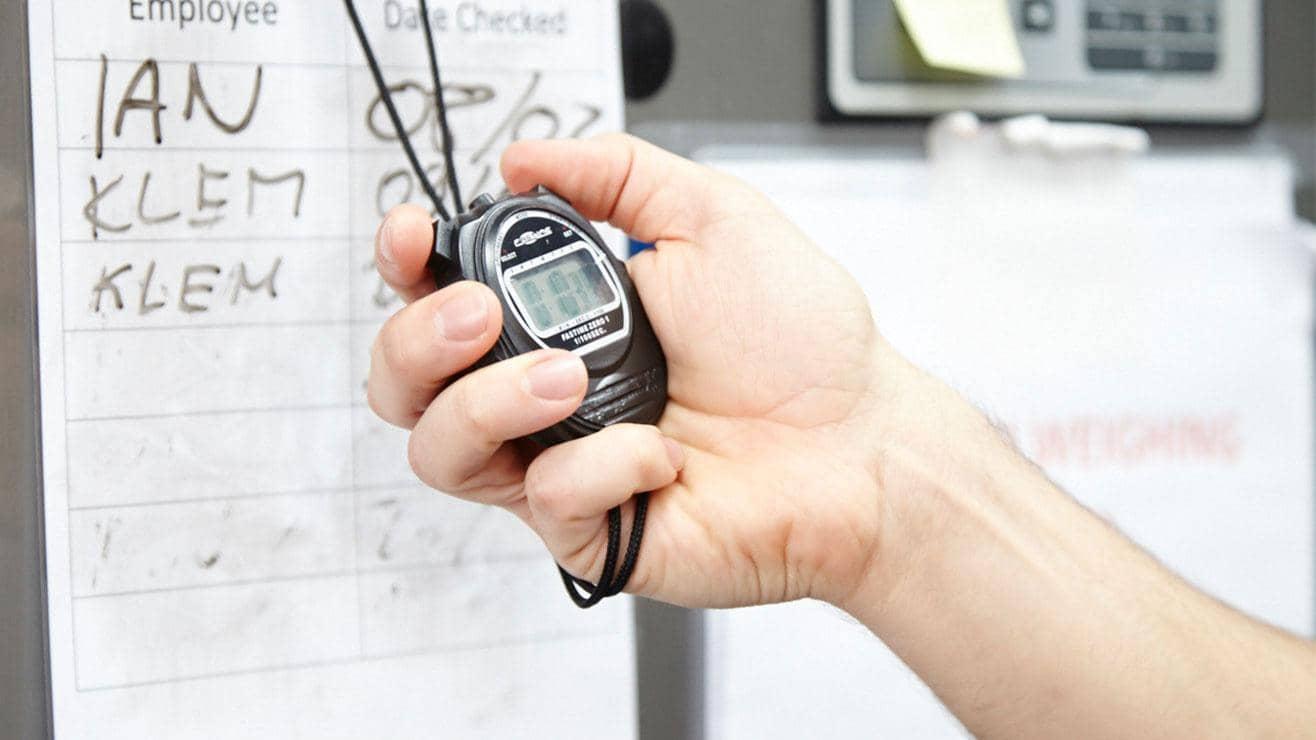
Rates and charges
Including rates for our savings accounts
Find out how much you could save with the tariff rates and charges on our finance options and services, including the rates on our savings accounts.
New tariffs
Barclays Business Account
See Barclays Business Account tariff [PDF, 537KB]
Use our Barclays Business Account tariff calculator to estimate your charges and see how much you could save.
Business Current Account (e-Payments Plan and Mixed Payments Plan)
Business Current Account Price Plan Charges [PDF, 145KB]
Business International Currency Accounts Business International Tariff [PDF, 89KB]
Charity and Impact Account (available to accounts if you applied after 9 May 2022) Charity and Impact Account [PDF, 230KB]
Barclays Business Tariff
Barclays Business Tariff [PDF, 93KB]
Barclays Business Tariff – Free Money Transmission Barclays Business Tariff – Free Money Transmission [PDF, 460KB]
Business BespokeTariff Business Bespoke Tariff [PDF, 138KB]
Business 10% Discount Tariff Business 10% Discount Tariff [PDF, 237KB]
Business 20% Discount Tariff Business 20% Discount Tariff [PDF, 232KB]
Business Free Automated Transactions Tariff Business Free Automated Transactions Tariff [PDF, 147KB]
Business Credit Interest Tariff Business Credit Interest Tariff [PDF, 149KB]
Community Account Community Account [PDF, 465KB]
Free Banking Business Free Money Transmission Tariff [PDF, 124KB]
Interest rates
If you're busy putting money away into an interest-earning account, it helps to know what rate applies to your funds. Whether you've got a currency account or have savings in sterling, euros or US dollars, you can access the interest rate information you need.
Current interest rates for deposit accounts listed below
- Business Premium Account
- Clients' Premium Account
- Currency Clients Premium Account
- Currency Business Premium Account
- Barclays Business Current Account with Credit Interest
Historical interest rates for accounts listed below
- Business Premium Account
- Client Premium Account
- Active Saver
- Rate Reward
- Business Tracker Account (non-sterling)
- Euro Business Premium Account
- US Dollar Business Premium Account
- Currency Call Deposit Account
See our savings range
Just starting?
Don’t forget you get a free banking 1 period if you’re just starting up in business. After that, we’ll switch you to our Mixed Payments Plan or our e-Payments Plan, whichever suits you better.
Start-up accounts
Ready to apply for a business bank account?
Our support and services go beyond the banking essentials.
Open a bank account
Important information
Available for individuals setting up their first business bank account for a business within its first 12 months of trading. There is no charge for standard transactions for 12 months with our standard Business Start-up Package. This is only available to new businesses opening their account with Barclays. This applies to everyday sterling and debit and credit transactions and the maintenance fee. Please note accounts must be active. Return to reference

- Barclays Live
Barclays Resilience
Barclays maintains a robust Resilience programme designed to ensure highly available services, make sure these services can withstand the impact of incidents, guarantee a robust response to crises and to continue to deliver excellence to our customers and clients.
A summary of our global approach can be found below.
Related information
- Find your local Barclays office
Barclays starts layoffs as firm implements cost-cutting plan - report
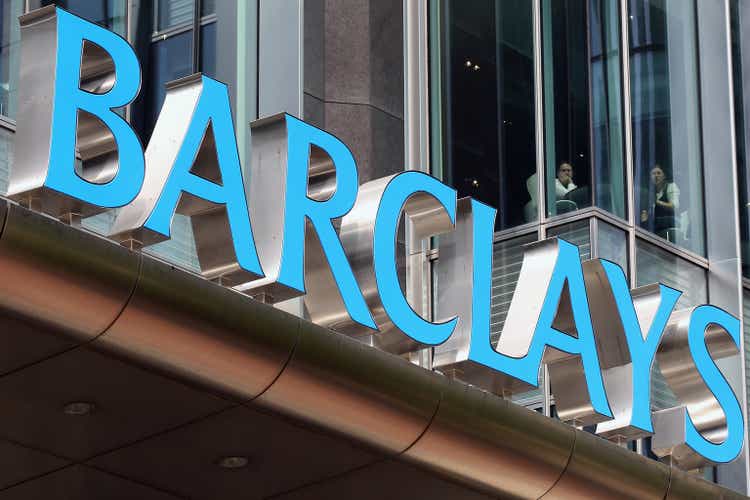
Oli Scarff/Getty Images News
Barclays ( NYSE: BCS ) has started axing several hundred jobs in global markets, investment banking and research as the British bank implements cost-cutting measures in a bid to boost returns, according to a media report dated Wednesday.
The layoffs come after Barclays ( BCS ) disclosed a 7% Y/Y slump in income tied to its investment bank unit in Q1, amid a drought in dealmaking and capital markets activity.
In all, the lender's profit before tax more than doubled sequentially, but dropped from a year ago, as the U.K. lender implemented its revamp plans. In a February update, Barclays ( BCS ) pledged to focus more on domestic banking business in terms of investment, and mapped out cost-cutting and capital-return plans.
“We regularly review our talent pool to ensure that we can invest in talent and deliver for clients,” Barclays said in a statement, Bloomberg reported.
More on Barclays
- Barclays PLC (BCS) Q1 2024 Earnings Call Transcript
- Barclays: Still At 0.5x Tangible Book, But Rerating Quickly
- Barclays: Cost Savings Support Ambitious Financial Targets
- Goldman Sachs in talks to transfer GM credit card program to Barclays - report
Recommended For You
About bcs stock, related stocks, trending analysis, trending news.
We've detected unusual activity from your computer network
To continue, please click the box below to let us know you're not a robot.
Why did this happen?
Please make sure your browser supports JavaScript and cookies and that you are not blocking them from loading. For more information you can review our Terms of Service and Cookie Policy .
For inquiries related to this message please contact our support team and provide the reference ID below.
- International edition
- Australia edition
- Europe edition

Barclays accused of greenwashing over financing for Italian oil company
Exclusive: Environmental groups say bank is misleading public over ‘sustainable’ financing for Eni as company vastly expands fossil fuel production
Barclays is being accused by environmental groups of greenwashing after helping to arrange €4bn (£3.4bn) in financing for the Italian oil company Eni in a way that allows them to qualify towards its $1tn sustainable financing goal.
Environmental groups have said the London-based bank is deliberately misleading the public by labelling the financial instruments as “sustainable” at the same time that Eni is in the midst of a multibillion-pound fossil fuel expansion drive designed to increase production.
An investigation by the journalism organisation Point Source has revealed that the deals for a revolving credit line were completed last year, months after the Milan-based company announced it intended to increase its spending on the production of oil and gas by at least a third over four years, investing between €24bn and €26bn.
In February 2023, Eni said it was aiming to increase its production of oil and gas by between 12.6% and 17% over the four-year period to the end of 2026.
Eni’s oil and gas expansion plans include a project to develop the Verus gas field, which could emit 7.5m tonnes of carbon dioxide a year and has been described as a “carbon bomb” by the Institute for Energy Economics and Financial Analysis.
Owing to its expansion plans, Eni’s production in 2030 is projected to be 35% higher than that required to align with the International Energy Agency’s net zero emissions by 2050 scenario, according to the campaign group Reclaim Finance. Eni says it still aims to achieve net zero by 2050.
The financing Barclays helped Eni raise includes a sustainability-linked bond (SLB) worth €1bn and a revolving sustainability-linked loan (SLL) worth €3bn.
While there is nothing in the terms of these financial instruments to prevent Eni from using the funds raised to develop oil and gas projects, including the Verus gas field, Barclays says the financing qualifies to be counted towards its 2030 sustainability target because the interest rates have been linked to emissions goals.
However, environmental groups and financial experts say the goals in the contracts, which exclude scope 3 emissions, are unambitious and incompatible with the internationally agreed target to limit any rise in global temperature to 1.5C above preindustrial levels.
Scope 1 emissions come from sources that an organisation owns or controls directly, while scope 2 emissions are caused indirectly and come from where the energy it uses is produced. Scope 3 emissions include all other indirect sources in the value chain of an organisation that are not within scope 1 and 2.
The exclusion of scope 3 emissions in the targets has been criticised because the majority of Eni’s emissions, such as those from burning the oil and gas it produces, are considered scope 3.
Jo Richardson, the head of research at the non-profit research organisation Anthropocene Fixed Income Institute, said: “There are a lot of sustainability-linked financial products that are not effective – and these are two classic examples.
“To see a really effective sustainability structure in the oil and gas sector you would need to see a company with a clear and committed plan to reducing scope 3 emissions.”
Lucie Pinson, the founder and director of Reclaim Finance, said: “Issuing an SLL like this is an easy way for Eni to raise money without having to make a significant climate effort or change anything about its business. It also allows banks who have pledged net zero to keep financing the worst climate offenders while pretending to support their transition.”
In June last year, the Financial Conduct Authority sent a letter to financial institutions warning of “the possibility of potential risks to market integrity and suspicion of greenwashing in the context of SLLs”.
It said it was concerned about “weak incentives, potential conflicts of interest, and suggestions of low ambition and poor design”.
In February this year, Barclays announced that it would no longer provide direct funding for new oil and gas projects. However, financing in the form of SLBs and SLLs could continue for companies that are developing new oil and gas fields because the bank does not consider this to be “direct” project financing.
Huw Davies, senior finance adviser at the campaign group Make My Money Matter, said: “Not only are the UK’s largest banks [continuing to help] finance companies that are expanding oil and gas production, but this shows they’re doing so under the pretence of so-called ‘sustainable’ finance.
“Barclays’ decision to provide billions in corporate finance to Eni – a company which continues to develop new oil and gas – is enabling fossil fuel expansion, and contradicting their claims to be serious about sustainability.”
When contacted by the Guardian, Barclays declined to comment.
In a statement, Eni said it chose the targets in its sustainability-linked financial instruments “tailored to their maturity range” and because of this “it was not possible to use a scope 3 target”.
It added: “Eni has built a business model that puts sustainability at the centre of every business activity, including financial strategy.
“The development of the Verus project is consistent with Eni’s objective of achieving scope 1 and 2 carbon neutrality in all its businesses by 2035 … In particular, the development of Verus would include the use of capture and storage of CO 2 to supply decarbonised energy in line with Eni’s objectives.”
Barclays was a lead arranger in the $3bn sustainability-linked revolving credit facility that was provided to Eni by 26 global financial institutions including Italy-based Mediobanca Group, New York-based Citi, and France’s Natixis.
The SLL has a time period of five years and its sustainability targets relate to the installed capacity for the production of electricity from renewable sources as well as emissions goals.
Barclays was one of three banks that structured the $1bn SLB for Eni. The other banks involved were Goldman Sachs and JP Morgan Chase. All banks declined to comment.
- Climate crisis
- Oil and gas companies

Oil price could exceed $100 a barrel if Middle East conflict worsens, World Bank warns

What next for oil prices after Iran’s attack on Israel?

Emissions connected to top oil and gas firms may cause millions of heat deaths by 2100, study finds

Climate activists across Europe block access to North Sea oil infrastructure

Campaigners get go-ahead to challenge plans for oilfield in Lincolnshire Wolds

MPs open inquiry into success of UK Treasury sanctions on Russia
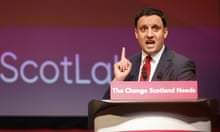
Anas Sarwar stands by oil tax plans after Aberdeen executives call him ‘traitor’

Saudi Arabia surprises oil markets by ditching plan to increase production
Most viewed.

IMAGES
COMMENTS
BARCLAYS. Your business plan. A Business Plan will help you collate and clarify your business ideas, plan for the future of your business, and will help to show whether your idea is realistic and workable. Your Business Plan will play a key role in attracting funding to get your business started, so you should make sure you have one prepared ...
A comprehensive business plan is the best way to go about defining your business. Your plan should include: What your business will do. The products or services it will provide. How customers will access your products or services (eg in a shop, online or by phone) Your approach to pricing. Your long and short-term objectives - including a ...
A business plan should be an evolving document that reflects what you are learning and the data and insight that is being collected. The sections may need to be adapted or added to, depending on the nature of the business, its sales model and type of funding. Step 14. Talk to Barclays Eagle Labs
We want Barclays to be renowned for an excellent operational performance, highly satisfied customers and clients, strong liquidity, capital and risk management, and predictable, attractive shareholder returns. Building on our strong foundations, we have a clear plan to achieve these objectives and deliver further value for shareholders by 2026.
Barclays is a British multinational universal bank, headquartered in London, England. Barclays operates as two divisions, Barclays UK and Barclays International, supported by a service company, Barclays Execution Services. The business model of Barclays involves its business plan, Revenue model, its competitors, SWOT Analysis and many more.
Overview. Barclays is a British universal bank. We support consumers and small businesses through our retail banking services, and large businesses and institutions through our corporate and investment banking services. Our purpose is to deploy finance responsibly to support people and businesses, acting with empathy and integrity, championing ...
Developing a clear and concise business plan for your startup can be the difference between gaining investment or not, and even success or failure, in some cases. ... Barclays (including its employees, Directors and agents) accepts no responsibility and shall have no liability in contract, tort or otherwise to any person in connection with this ...
LONDON— Barclays BARC 1.01%, one of Europe's last major trans-Atlantic investment banks, is shifting its priorities from New York to London. Chief Executive C.S. Venkatakrishnan unveiled a ...
Barclays US Consumer Bank offers co-branded, small business and private label credit cards, installment loans, online savings accounts, and CDs. We are proud to have 20 million retail customers in the US, and to work with some of the largest US brands on a range of partner cards in the world's largest credit card market. Webcast Replay.
your business and review your business plan, business model and budget. Consider ways to build business resilience and manage longer-term disruption, particularly in relation to geographical spread and complex supply chains. Understand and adapt to the ongoing cultural and behavioural shifts introduced by the pandemic and the 'new normal'
A SWOT analysis is an in-depth review of your business, now and going forward. You should carry out and review your SWOT analysis at least once a year - it will help you to understand what's going well and what could be improved, and in turn will inform your plan going forward. What to include in your analysis:
When you open a business account using Online Banking, you'll get free access to the FreshBooks package developed exclusively for our business customers. FreshBooks is offering this free for anyone who has a business current account with us. Barclays Bank PLC only gets commission from upgrades. The package is based on the existing FreshBooks ...
Barclays is working on plans to save up to 1 billion pounds ($1.25 billion), which could involve cutting as many as 2,000 jobs, mainly in the British bank's back office, a person with direct ...
Business accounts. Barclays has a start-up account for businesses that have been trading for less than a year and an account for those with a turnover of up to £6.5 million. Each business account ...
The plan was announced as Barclays reported a 6% decline in annual pre-tax profits to £6.6bn. ... Barclays said it would simplify its business through the creation of five divisions, boosting ...
The Barclays PLC Business Model Canvas provides a holistic view of the company's business model, highlighting the interdependencies between its various components. Through strategic partnerships, a wide range of activities, key resources, and a customer-centric approach, Barclays aims to deliver value to its diverse customer segments. ...
Show off your personality "Angels are investing in fairly early-stage businesses so the business plan is largely aspirations rather than accomplishments," says Colin Mason, Professor of Entrepreneurship at the University of Glasgow's Adam Smith Business School. "This means that angels are investing in people rather than in the business - i.e. they are betting on the jockey rather the ...
Identify the seven key steps to setting up a business and how to apply these. Demonstrate how to plan and pitch a business idea. The Starting a business handbook includes the student sheets for this lesson, with useful tips and relevant websites to refer to in future. It can also be used independently by students who are keen to plan their ...
When you've an idea of the financial situation, there are some key ways to increase revenue. Sell more to your existing customers. Sell to a new market - such as overseas or through the internet. Develop new products for your existing customers. Develop new products for new customers. There are pros and cons to each of these strategies, so ...
Barclays outlined a plan to return at least 10 billion pounds ($12.60 billion) to shareholders between 2024 and 2026 and to aggressively cost cuts alongside a reorganization of its business ...
Please see page 13 for further detail, or home.barclays/strategy. 2 Litigation and conduct in 2023: £37m, 2022: £1,597m, which includes £966m related to the Over-issuance of Securities and 2021: £397m. Find out more about our approach to measuring progress towards our strategic goals and delivering positive outcomes for all our stakeholders.
51 to 75 accounts £7.00 per account. 76 to 100 accounts £6.00 per account 101 + accounts £5.00 per account £25.00 per account. Security Fees. New and replacement Smart Cards1 New and replacement Smart Card reader New and replacement Biometric Smart SIM2 New and replacement Biometric reader. £20.00 £35.00 £20.00 £55.00.
Interest rates. If you're busy putting money away into an interest-earning account, it helps to know what rate applies to your funds. Whether you've got a currency account or have savings in sterling, euros or US dollars, you can access the interest rate information you need. Current interest rates for deposit accounts listed below.
Barclays Operational Resilience Client Statement Barclays maintains a robust resilience framework with our clients' and customers' interests at the centre. Our aim is to be able to continue delivering services and meet our clients' and customers' needs during business disruptions, crises, adverse events and other types of threats.
Barclays Resilience. Barclays maintains a robust Resilience programme designed to ensure highly available services, make sure these services can withstand the impact of incidents, guarantee a robust response to crises and to continue to deliver excellence to our customers and clients. A summary of our global approach can be found below.
Barclays ( NYSE: BCS) has started axing several hundred jobs in global markets, investment banking and research as the British bank implements cost-cutting measures in a bid to boost returns ...
Barclays Plc has begun cutting hundreds of jobs as the firm embarks on a £2 billion cost-cutting drive that's part of Chief Executive Officer C.S. Venkatakrishnan's yearslong plan to boost ...
Last modified on Fri 26 Apr 2024 07.51 EDT. Barclays is being accused by environmental groups of greenwashing after helping to arrange €4bn (£3.4bn) in financing for the Italian oil company Eni ...